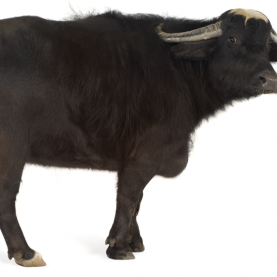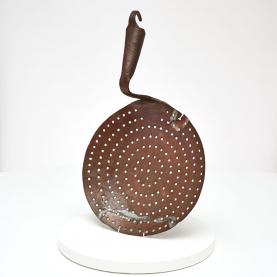Mozzarella
Mozzarella comes from the Italian verb 'mozzare'. This refers to the way the curd is hand-stretched in strips and then cut into balls. Originally, mozzarella was only made with buffalo milk. Although buffalo milk cheese already existed in Campania in the 12th century, the term mozzarella only appeared in the 16th century. This cheese became popular in the late 18th century. Nowadays, mozzarella is mainly produced using cow’s milk.
Origin of mozzarella
Mozzarella is named after its specific production process. In Italian, the verb mozzare refers to the way the curd is hand-stretched in strips and then cut into balls.
The term 'mozzarella' first appeared in Italy in 1570 in a cookery book by Bartolomeo Scappi, chef to the papal court. However, cheese-making with buffalo milk was first recorded in the 12th century. The monks at San Lorenzo monastery in Capua used to offer cheese called mozza to worshippers during their annual pilgrimage. Later, in the 14th century, only the mozze that could withstand transportation were sold at the markets in Naples and Salerno. Mozzarella only became popular at the end of the 18th century when the Bourbons started breeding buffalos.
Although it used to be made exclusively with buffalo milk, nowadays mozzarella is mainly produced with cow’s milk. The production of Mozzarella di Bufala Campana AOC (Protected Designation of Origin) guarantees a product made according to traditional techniques defined in AOC label specifications, with milk from four regions of Southern Italy (Campania, Latium, Puglia and Molise) and part of the provinces of Benevento, Rome, Naples, Frosinone, Latina, Foggia and Isiernia.
The production of mozzarella di bufala Campana AOC
According to mozzarella di bufala AOC production techniques, the first step involves leaving the buffalo milk, mixed with whey (also known as serum, liquid that separates from the curd) to rest overnight. The mixture is heated between 33°C and 39°C the following day. This preparation coagulates rapidly once the rennet (calf stomach extract) has been added.
After coagulation, the resulting curd is cut into small pieces and the whey is separated from it. After resting for a few hours so that the curd can acidify, boiling water is added to obtain a compact and elastic mass. The cheesemaker stretches the paste with a stick in order to ensure that the mass is elastic enough. When it stretches evenly without breaking, it is placed on inclined surfaces to extract the whey (serum) residues. The mass is then cut into strips which are placed in containers and immersed in hot water to meld the mass together. The molten mass is then raised and stretched until it is homogeneous.
The cheesemaker cuts pieces from the mass and forms balls by hand or places pieces in moulds. The balls are then immersed in cold water to firm them up, then soaked in salted water and finally packed, with or without a mixture of water and whey.
A kneaded, stretched cheese
Mozzarella is known as a stretched-curd cheese because of the way the cheese mass is kneaded and stretched, like bread dough. Mozzarella is a fresh, mild cheese with a shiny, damp appearance. Its firmness and whiteness guarantee its freshness. When cut, the mass exudes a white liquid with a milky smell. Mozzarella usually comes in the shape of a ball, but is also available as pearls. The largest ones, shaped like a braid or a knot, can weigh up to 3 kg.
Nutrition
Mozzarella di bufala is a very digestible cheese with low fat, lactose and cholesterol content. It is high in proteins, calcium, phosphorus and water-soluble vitamins (B1, B2, B6 and niacin). It is also a good source of zinc and vitamin E, which help fight tissue ageing. Unlike many other cheeses, it has a low salt content and is therefore suitable for people prone to high blood pressure.
CONSORZIO DI TUTELA MOZZARELLA DI BUFALA, 2014. Mozzarella di Bufala, 2014 [en ligne]. [Consulté le 22 décembre 2015]. Disponible à l’adresse : http://www.fromagesditalieaop.com
RTS | RADIO TELEVISION SUISSE, 2014. La fabrication de la mozzarella. À bon entendeur [en ligne]. Radio Télévision Suisse, 20 mai 2014 [Consulté le 23 décembre 2015]. Disponible à l’adresse : http://www.rts.ch
RTS | RADIO TELEVISION SUISSE, 2008. La fabrication de la mozzarella. À bon entendeur [en ligne]. Radio Télévision Suisse, 19 août 2008 [Consulté le 23 décembre 2015]. Disponible à l’adresse : http://www.rts.ch
SWISSMILK. Qu’est-ce la mozzarella. Swissmilk [en ligne]. [Consulté le 23 décembre 2015]. Disponible à l’adresse : https://www.swissmilk.ch








